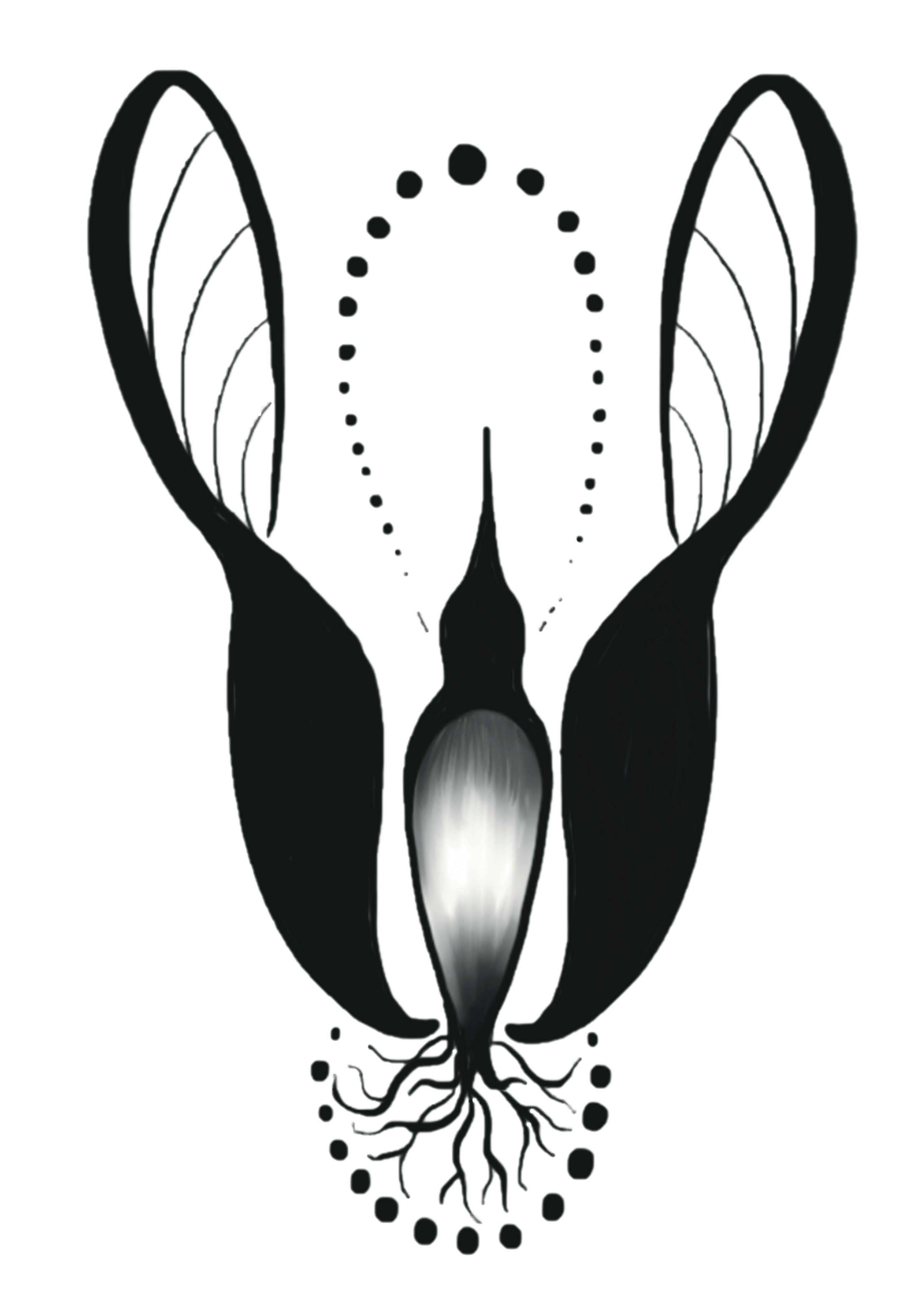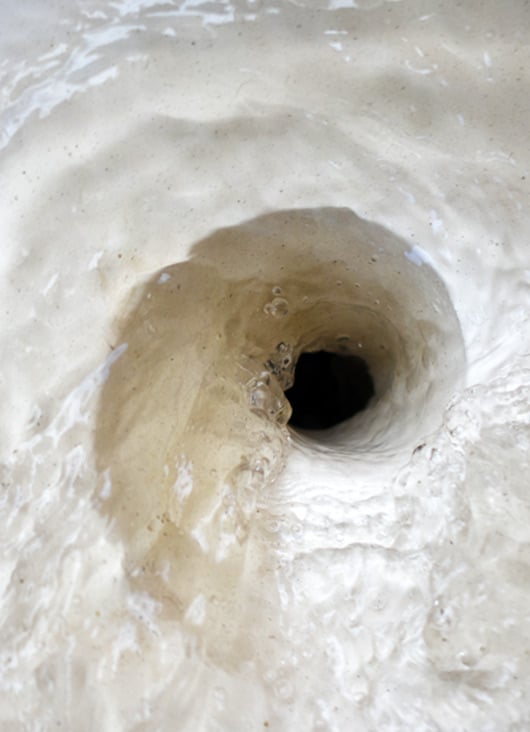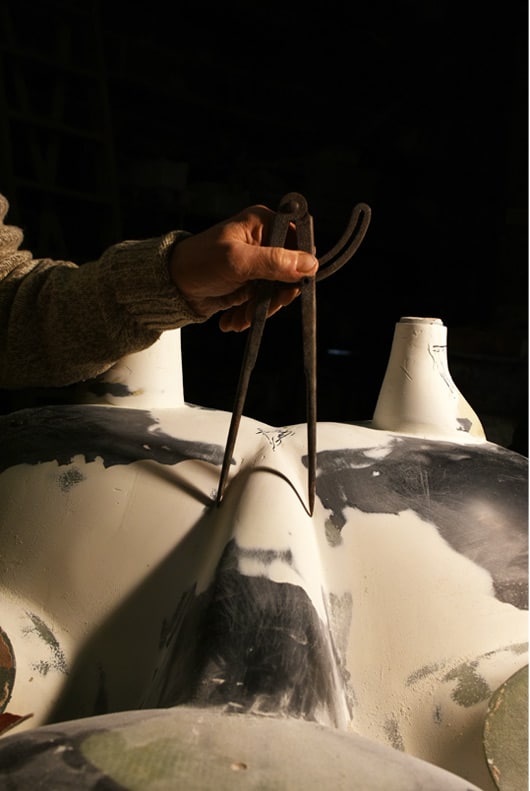Sculpting to Let Water Breathe
Birth of the Virbela® Flowforms
“Art reveals what would otherwise remain hidden.” — Goethe
By letting water flow through cavities proportionate to its natural movements, and by studying the elements related to slope, flow rate, size, and shape, John Wilkes discovered a pendular movement from right to left, completing both loops of the meander. From this, water expressed a rhythmic pulsation. In 1970, this remarkable discovery gave birth to the “Flowforms®.” Later came the VIRBELA® label, established to protect Flowforms / Vasques Vives Virbela® and to encourage further research into the quality of water’s forms and movements.
This harmoniously rhythmic ebb and flow of water raised many questions — particularly: could this movement directly influence water regeneration, and by extension, the formation and vitality of living organisms? In nature, this phenomenon does not appear explicitly in the flow of liquids, except in blood circulation and the formation of organs. For example, the inner shapes of the heart support the cardiac rhythm.
The rhythmic movements of water
Created through form
Born from the sculptor’s hand, these fountains and cascades combine usefulness with beauty.
Just as water shapes rivers and streams, the Vasques Vives Virbela® are an artistic expression of the movements inherent to the nature of water.
Thanks to their subtly proportioned shapes, the Vasques Vives Virbela® (from the English Flowform®) generate looping or lemniscate-like movements, allowing the melodious and rhythmic song of water to resonate — like the ebb and flow of waves along the shore. Depending on their design, some creations produce wide, slow loops; others a quicker pulse; and still others feature swirling currents or broad, shimmering sheets of water in the light. The sought-after rhythmic phenomenon is truly one of a kind.
Delicately shaped by the sculptor in dialogue with the water — much like a luthier tuning an instrument for air — these forms create alternating vortices (left- and right-handed), generating a breathing, harmonising motion within the water. This not only balances and revitalises it but also brings forth the soothing and restorative benefits of a living, energised environment.
Generate Balance and Well-Being
Refined through rhythm, water brings acoustic, aesthetic, and harmonising balance to the home, nature, or public spaces. These fountains and cascades offer a gentle and enchanting presence for all ages — a source of well-being that, for some, becomes truly therapeutic.
Dedicated to serving water, the Vasques Vives stand out for the harmony of their organic shapes and their natural beauty. They effortlessly draw the eye, awaken the senses, and invite contemplation and meditation.
Materials
Stone and stone aggregates as the primary element
Over the past 25 years, a great variety of Virbela® Flowforms have been created. Research into the design of forms and their effects on water is constantly evolving. While some commissions have required sculpting directly into solid stone blocks or hammering copper sheets for unique pieces, Vasques Vives are generally made from stone aggregates. Other durable materials are also used, such as ceramics and glass. Creating a shape is a long process. After one or two prototypes in clay, the form is tested by letting water flow through it. Once the desired shape is achieved, it undergoes a series of moulding stages (both negative and positive) in various materials, refined through sanding to produce a mould suitable for reproduction. Depending on the size of the piece, several hundred hours of skilled craftsmanship are required. Jérémie then visits quarries to select the stone based on size, colour, hardness, and other criteria. The stone aggregates are bound with a carefully chosen white cement. After demoulding, a surface treatment exposes the natural grain of the stone, enhancing its authentic texture and character.
The Vasques Vives are made from high-quality reconstituted stone. The carefully selected stone aggregates produce natural granite-like tones: wine pink, verdigris green, salmon, or uniform limestone beige. Their manufacturing process makes the Vasques Vives UV-resistant, frost-proof, and suitable for both indoor and outdoor use.
On request, Aïga Terra can create unique pieces designed for specific settings.
These fountains and cascades blend seamlessly with all styles of architecture and landscape. In collaboration with other Virbela® Flowform creators, Aïga Terra offers a wide range of fountains and cascades. Other shapes, tones, and materials — such as copper, glass, or ceramic — are available upon request.


